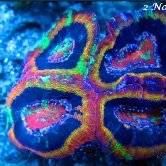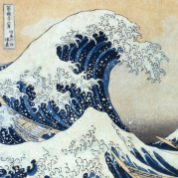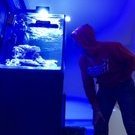-
Posts
958 -
Joined
-
Last visited
Contact Methods
-
Website URL
www.CoralEverAfter.org
Custom Fields
-
Gender
Female
-
Interests
Collecting hobbies
Recent Profile Visitors
11,968 profile views
ReefdUp's Achievements

Grandmaster Reefer (9/13)
10
Reputation
-
Sorry... was in a rush while on a shuttle. Dosing *silica* will feed diatoms to outcompete the dinos.
-
I'm not close to you, but I am still happy to take a look at a sample if you can get it over to me (in NoVA). You can try dosing diatoms to help outcompete them in the interim.
-
Ugh, that's unfortunate. If things seem to improve with lights-out, then... unfortunately, that's worse news. It's probably Ostreopsis, which migrate into the water column during lights-out and coagulate (for lack of a better term) on surfaces when the lights come on. Lights-out doesn't kill them or stunt their growth. It can buy your corals time, though, and it can get them moving into a UV sterilizer.
-
Yes, that's what I decided to use this year after removing my sand bed and crashing my nutrients. I was able to manage all previous outbreaks by managing nutrients, temperature, and pH carefully. Unfortunately a UV sterilizer will only work on dinoflagellates that are open-water swimmers (thankfully the most toxic types normally), but it won't do much for ones that are found in the sandbed or on rocks.
-
Good news is that your nutrients haven't hit rock bottom, so you have a fighting chance against dinos. Don't let them drop.
-
This is a really quick version of the coffee filter Dinoflagellate test... Pull a sample of the offending grossness, and put it into a container of water with a tight lid. Shake the container of grossness really well, until it is soup-like. Setup another container with a funnel and coffee filter, so that you can filter the contents of the first container into the second. Strain the liquefied grossness through the coffee filter. The second container should fill with clear-ish liquid. Place the second container in high light for about an hour. (Throw out the first container's contents, if any remain). If the second container develops a blob-snot-like mass, then, I'm sorry, you probably have dinos. They clump together in high light. If it doesn't, then you may still have dinos, but not the super miserable ones (there are lots of types). Hope that helps.
-
Let's get to the root of the issue... What are your nitrate and phosphate levels? High phosphate is a good indicator that it's in the cyano family, while high nitrate is a good indicator that it's in the algae family. If both are low, there's a good chance it's dinoflagellates. Next, if you don't have access to a microscope (but if you do, see what it is!), do the coffee filter test to see if it's dinoflagellates. If you don't know how to do this test, I can walk you through it. Note... if it's dinos, then water changes are one of the worst things you can do. Knowing what problem you're fighting will help you know how to fight it. Yes, many of the above solutions can help various things in different ways, but they are not broadly effective.
-
Ryan Batcheller and I had a fun conversation on Serious Reefs discussing how I save corals as a hobby. Check it out if you'd like hear more! (Note: It's behind a paywall, so if that's not your thing, well, I'll be at the next meeting so we can chat in person!)
-
There are some big things underway here... and to kick it off, it's about time that we had a real way to assess coral diseases! Looking forward to your thoughts! Coral Disease Assessment: Key Lesion Insights for Hobbyists Stay tuned for the next big announcement.
-
Ack! I'm so sorry - I completely missed your post! I haven't had a chance to watch the video yet, but there are absolutely a lot of things that help in hospital tanks. My hospital tank is currently sitting at 74*F (not recommended), running carbon, but I use higher aeration (interested to know the logic behind lower aeration). Hopefully I can watch it this weekend. Thanks for sharing!
-

Classroom Tanks: The Phoenix Center - Stafford, VA
ReefdUp replied to gastone's topic in Education Forum
This is so fantastic!! Oh, I'm so excited for the students! Thank you for all of your efforts! (And, if any K-12 students are interested, we still offer free memberships for them!) -

Classroom Tanks: The Phoenix Center - Stafford, VA
ReefdUp replied to gastone's topic in Education Forum
What a fantastic build!! And what an amazing opportunity for those kids. Thank you for all of your dedication - and then sharing it with us! Please keep it coming! -

Hello again friends, getting a system going after 10 year absence.
ReefdUp replied to dave w's topic in New to the Hobby
Welcome back!














